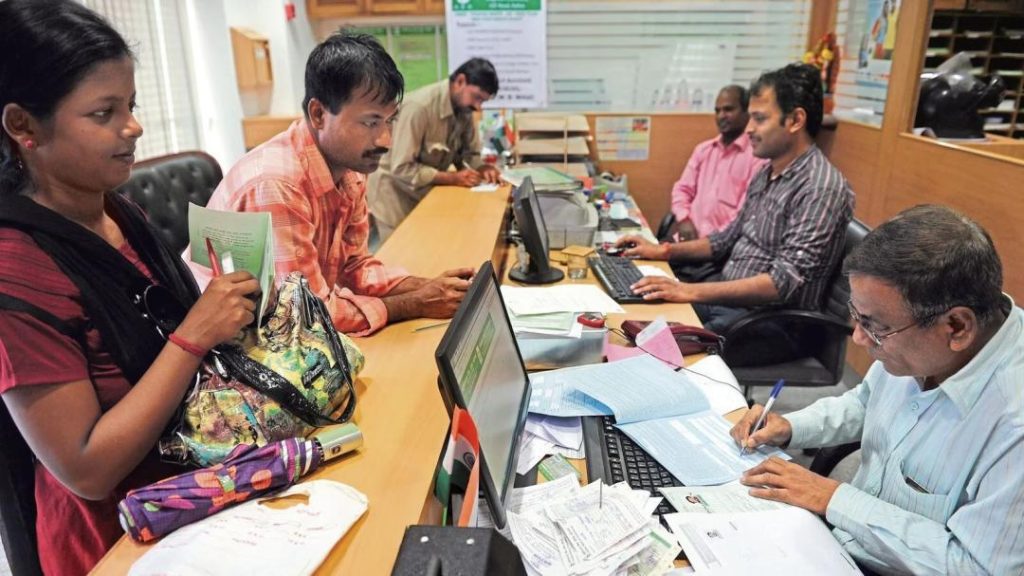
Microfinance Shrinks as Lenders Shun Small Loans: Report
The Indian microfinance sector has been witnessing a significant decline in loans under ₹50,000 in recent times. According to a recent report, the market size of microfinance loans in India has shrunk by 17% year-on-year to ₹3.59 lakh crore by June 2025. This decline is largely attributed to the rising defaults and over-indebtedness among borrowers.
Microfinance lenders have been facing challenges in managing their loan portfolios, leading them to adopt a more cautious approach towards lending. As a result, they are now preferring to offer larger, safer loans, which may not be accessible to many rural families and small businesses.
This shift in lending patterns threatens the very essence of financial inclusion, as it leaves many underserved communities struggling to access affordable credit. The regulators are now facing a tough balancing act to ensure that the microfinance sector continues to play a vital role in promoting financial inclusion while also maintaining the stability of the financial system.
Rise in Non-Performing Assets (NPAs)
One of the key reasons for the decline in microfinance lending is the surge in non-performing assets (NPAs). According to the report, NPAs in the microfinance sector have risen to 16%, which is a significant increase from the previous year. This has led lenders to become more risk-averse and cautious in their lending decisions.
The rise in NPAs is attributed to various factors, including the lack of proper credit assessment, inadequate supervision, and the inability of borrowers to repay their loans. The increasing number of defaults has put pressure on lenders to maintain their capital adequacy ratios, leading them to adopt a more conservative approach towards lending.
Impact on Rural Families and Small Businesses
The decline in microfinance lending is likely to have a significant impact on rural families and small businesses that rely heavily on these loans to meet their financial needs. Many of these borrowers do not have access to traditional banking channels and rely on microfinance institutions to meet their credit requirements.
The lack of access to affordable credit may force these borrowers to turn to informal sources of credit, such as moneylenders and loan sharks, which can lead to a cycle of debt and exploitation. This may have a negative impact on the overall economic well-being of these communities and may also perpetuate poverty and inequality.
Regulatory Challenges
The regulators are now facing a tough balancing act to ensure that the microfinance sector continues to promote financial inclusion while also maintaining the stability of the financial system. The Reserve Bank of India (RBI) has been monitoring the microfinance sector closely and has been taking steps to address the issues of NPAs and over-indebtedness.
The RBI has been urging microfinance lenders to adopt a more cautious approach towards lending and to ensure that they have sufficient provisions to manage their loan portfolios. The regulator has also been promoting the use of technology to improve credit assessment and monitoring, which can help to reduce defaults and improve the overall efficiency of the lending process.
Conclusion
In conclusion, the decline in microfinance lending is a cause for concern, as it threatens the very essence of financial inclusion. The rise in NPAs and the shift towards larger, safer loans may leave many rural families and small businesses struggling to access affordable credit. The regulators are now facing a tough balancing act to ensure that the microfinance sector continues to promote financial inclusion while also maintaining the stability of the financial system.
It is essential for microfinance lenders to adopt a more sustainable approach towards lending, which includes proper credit assessment, adequate supervision, and the use of technology to improve the lending process. The regulators must also continue to monitor the sector closely and take steps to address the issues of NPAs and over-indebtedness.
Ultimately, the success of the microfinance sector depends on its ability to provide affordable credit to those who need it most, while also maintaining the stability of the financial system.






